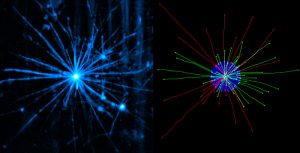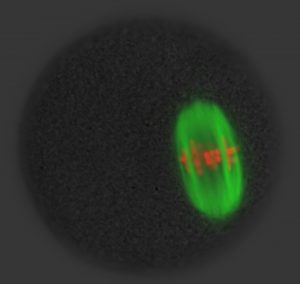5 August 2010
During cell division, microtubules emanating from each of the spindle poles meet and overlap in the spindle’s midzone. Scientists at the European Molecular Biology Laboratory (EMBL) in Heidelberg, Germany, have uncovered the molecular mechanism that determines the extent of this overlap. In a…
SCIENCE & TECHNOLOGY
2010
sciencescience-technology
2 December 2007
Cells in our body come in various shapes and sizes. Each cell is shaped in such a way as to optimise it for a specific function. When things go wrong and a cell does not adopt its dedicated shape, its function can be impaired and the cell can cause problems in the body. Researchers at […]
SCIENCE & TECHNOLOGY
2007
sciencescience-technology
10 September 2007

Scientists from the European Molecular Biology Laboratory (EMBL) have developed a new method to prepare and image biological samples in three dimensions with laser light-sheet based fluorescence microscopy. The technological advance, which is published in the current online issue of Nature…
SCIENCE & TECHNOLOGY
2007
sciencescience-technology
9 August 2007

Which genes are passed on from mother to child is decided very early on during the maturation of the egg cell in the ovary. In a cell division process that is unique to egg cells, half of the chromosomes are eliminated from the egg before it is fertilised. Using a powerful microscope, researchers…
SCIENCE & TECHNOLOGY
2007
sciencescience-technology
6 March 2007
Like our body every cell has a skeleton that provides it with a shape, confers rigidity and protects its fragile inner workings. The cytoskeleton is built of long protein filaments that assemble into networks whose overall architecture and fine detail can only be revealed with high resolution…
SCIENCE & TECHNOLOGY
2007
sciencescience-technology
29 December 2006
A cell is a busy place. In a permanent rush hour, molecules are transported along a dynamic motorway system made up of filaments called microtubules. Microtubules constantly grow and shrink and are rapidly assembled wherever a cargo needs to go, but during this transportation process they need to…
SCIENCE & TECHNOLOGY
2006
sciencescience-technology

